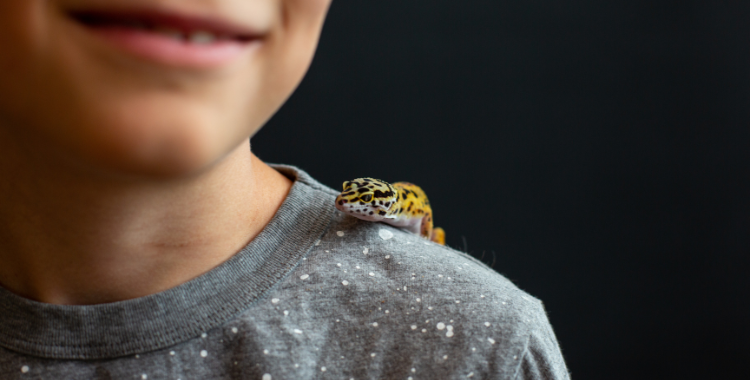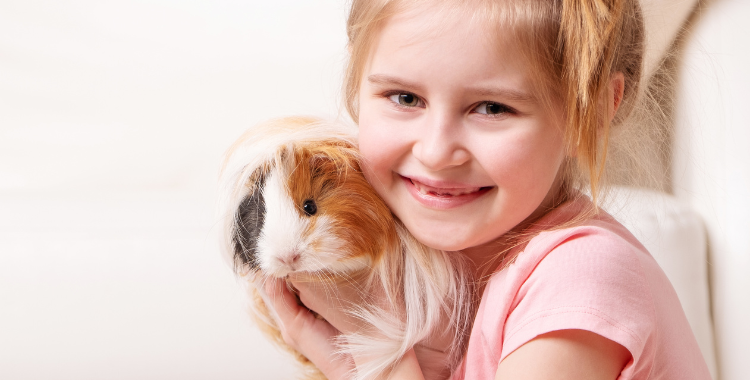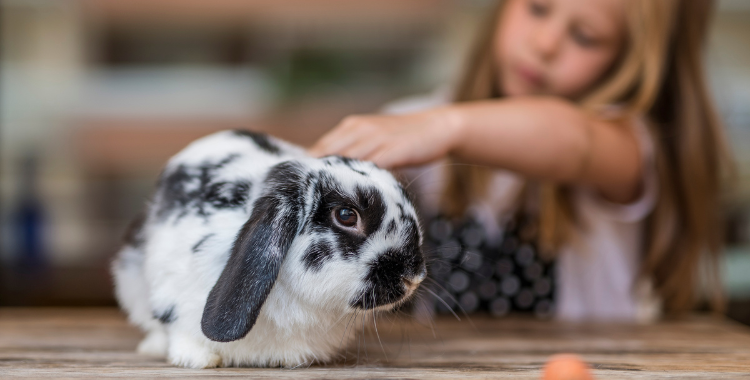ExoticDirect explores the benefits that exotic pets can have on children’s learning and development in a range of areas such as numeracy and literacy.
Many families choose to own pets for a number of reasons. Those of us who have owned pets as children reminisce fondly on these experiences and memories into adulthood.
But, if we delve further into the benefits pets bring, there are a lot more advantages than what initially meets the eye.
When you think of pets and children, you might not necessarily think your pet will aid your children’s learning but it’s quite the opposite.
From early years, to early adulthood and beyond, pets can help children with a large number of learning and development areas such as Language, Numeracy, Fine Motor Skills and more.
Read our article to understand all the ways pets can help aid children’s learning and development.
Communication and Language
Vocabulary
Many pets come with their own breed specific terminology. Words such as vivarium, substrate, juvenile and brumation are commonly used by lizard owners and therefore likely to be picked up by children who have lizards as family pets.
Similarly, parrot owners often come across phrases such as aviary, foraging, pellets and perch.
Familiarising children with words and phrases relevant to their exotic pet will help build their vocabulary as well as confidence when it comes to new words as some pet specific words may include phonemes children aren’t as familiar with.

Whilst owning an exotic pet, children are likely to learn new words relevant to the species.
Confidence with language
It can be argued that pets can help build children’s confidence with communication and language. Children often spend time with their pets and usually speak to them.
For younger children, this may be in the form of telling them about their day or creating imaginary stories they recall to their pets.
For slightly older children, pets can help develop children’s literacy skills as children may take the time to read books to their pet.
Pets don’t judge and, unless you own a parrot, they don’t talk back. Having opportunity to interact, and speak to their pet can be a great way for children to improve their confidence with language and speaking.
Engagement and observation
Pets can provide a great focus point and engagement opportunity for parents, or educational practitioners with class pets.
Spending time with your child and encouraging them to observe what your exotic pet is doing, how they may be feeling and how this makes the child feel is a great way to help encourage them with their language.
Furthermore, it can encourage children to be inquisitive, ask questions as well as take some quiet time to observe their pet in their every day routine.
Responsibility
Regardless of the pet breed, all pets come with a number of care responsibilities.
From food and diet, providing enrichment and entertainment, cleaning and care responsibilities as well as vet visits.
There’s a wide variety of responsibilities and opportunity for children to be involved. Dependant on the child’s age will likely depend on what level of involvement they have.
Younger children may simply be responsible for helping to feed or change your exotic pet’s water or helping adults supervise them during their out of cage exercise time dependant on the breed.
Slightly older children may have involvement with helping to clean their pets cage and may accompany their pet to routine vet visits.
It’s no wonder so many classrooms adopt class pets. Sharing this responsibility within classrooms is a great way to encourage children to take responsibility and share pets’ affection.

Owning a pet is a great way to teach, and give children responsibility. You’ll want to vary this dependant on your child’s age.
Self esteem
Many experts agree that pets can help children’s self esteem. Research shows that children across ages find emotional comfort in their relationships with animals (Mallon 1992; Jegatheesan & Meadan 2006; NIH 2009). They feel at ease talking to their pets about their fears, joys, frustrations, and everyday events and activities (Jegatheesan & Meadan, 2006).
To learn more about the purpose of pets in children’s lives and how they support children with mental health, confidence and more. Click here to read our article discussing the purpose of pets in children’s lives.

Research shows that children across ages find emotional comfort in their relationships with animals (Mallon 1992; Jegatheesan & Meadan 2006; NIH 2009).
Aiding the development of Fine and Gross Motor Skills
Exotic pets in particular can hugely help develop children’s Fine and Gross Motor Skills.
Simple tasks such as closing a hutch door, attaching a water bottle to a cage or filling up food bowls might seem like every day tasks for adults but are learned skills for children.
Fine Motor Skills
Fine Motor Skills involve the use of the smaller muscles in children’s hands and help with a number of activities such as writing, using scissors, playing with construction toys and eating.
Owning an exotic pet, regardless of the type, involves a number of activities which require children to use their smaller finger muscles.
Examples of this include intricate but every day tasks such as opening or closing a cage or hut door, picking up small food to add to an exotic’s bowl or closing the lid of a pet’s water bottle.
Practicing these skills whilst taking care of their pet will not only help with a child’s fine motor skills but will also give them a sense of purpose as they’re helping to take care of their pet.
Gross Motor Skills
Lesser used than Fine Motor Skills when it comes to younger children owning pets, Gross Motor Skills are still part of a child’s experience with their pet.
Gross Motor Skills are the skills children develop when using their whole body, in particular, the use of their their arms, legs and torso.
Dependant on the child’s age will depend on what level of Gross Motor Skills they use when taking care of a pet.
Some common pet-ownership activities using these skills will include children lifting and moving things.
Children obviously shouldn’t be lifting anything heavy or doing anything too arduous but examples of some Gross Motor Skills may include moving a small, light pack of bedding for their pet or maybe helping to set up an outside space for a pet to have some outdoors exercise time.
Alongside helping with Gross Motor Skills, activities like the above will help children with spatial awareness and understanding risk in the example of helping to set up an outdoors space for pets.
Numeracy
For children incredibly engaged and invested in their pet’s lives, you could take it one step further and help children practice their mathematical skills through their pet.
Dependant on the child’s age and what they’re learning at school may depend on how you seek to incorporate numeracy into your child and pet’s routine.
Some easy ways could include counting food/fruit/vegetable portions out, helping to weigh food portions and helping to calculate costs of pet related purchases.
If your child responds well to this, it might even be worth speaking to their teacher for further ideas on how you can incorporate your child’s numeracy skills and learning into life with your exotic pet.
Encouraging creativity.
Many children love to get creative. Whether it’s drawing with crayons, pencils or felt tips, expressing their response to pets through music, sounds or stories and much more.
Your exotic pet can be a great base for enabling your child to express their creativity through a variety of channels such as art, dance, music and more. Again, we’d advise it’s worth checking with your child’s nursery nurse or teacher in order to help make it relevant to what your child is focussing on in nursery or school.
Making it extra relevant for your child…
This article should have given you a strong understanding of how pets can help aid children’s learnings.
We’ve featured just a handful of ideas of how you can get your children engaging with pets whilst learning at the same time.
If you’re actively looking at using your pets to aid children’s learning, we’d always advise speaking with their teacher or nursery practitioner for more ideas and support to ensure you’re keeping things relevant to what they’re learning at school or nursery.

